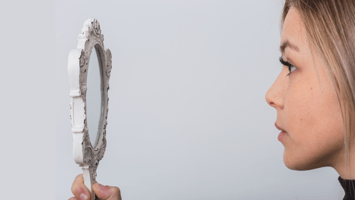Chris was working his way through a stack of learning modules in his computer science course. I had...
Struggle Is Not the Enemy: Why Productive Struggle Is the Key to Real Learning
For years, we’ve told students to “try harder” or “push through.” But what if the real shift we need is in how we frame the struggle itself?
In many schools today, we’ve unintentionally built cultures that rescue students from discomfort. We rush to give them the answer, lower the bar, or soften expectations in the name of support.
But here’s what research and neuroscience both tell us:
Struggle, when supported and intentional, isn’t a sign of failure — it’s the signal that learning is happening.
The Neuroscience of Struggle
From a cognitive science perspective, productive struggle activates deep learning processes in the brain. Unlike passive review or rote memorization, struggling to solve a problem stimulates the prefrontal cortex, which governs executive functions like working memory, decision-making, and impulse control.
When learners face a challenge just beyond their current ability, they must engage effortful retrieval, pattern recognition, and error correction. This active engagement triggers the release of dopamine, reinforcing successful learning and boosting motivation.
Meanwhile, myelination — the process by which neurons strengthen through repeated use — increases during challenge-based learning. Over time, these strengthened neural pathways lead to faster processing and greater cognitive flexibility.
Struggle doesn't damage learning. It builds it.
Why Productive Struggle Matters Now
Many students today are walking a tightrope between performance pressure and disengagement. Some feel anxious or disconnected; others lack confidence or motivation.
In response, well-meaning educators sometimes lower expectations to protect student well-being. But: Protection without preparation does not support mental wellness.
Instead, students need learning environments grounded in high support and high challenge — a model known as Liberating Leadership.
The Support Challenge Matrix helps us understand what happens when we lean too heavily toward one side:
-
High challenge + low support = Domination (fear, anxiety)
-
High support + low challenge = Protection (entitlement, stagnation)
-
Low support + low challenge = Abdication (disengagement, apathy)
-
High support + high challenge = Liberation — the sweet spot where growth happens
This is the zone of productive struggle.
Students don’t need us to remove the weight — they need us to spot them while they lift it.
What "Make It Stick" Gets Right
In Make It Stick: The Science of Successful Learning, the authors explain that the most effective learning is often effortful, uncomfortable, and inconvenient — but that’s exactly why it works.
“Learning that feels hard is more likely to stick.”
Strategies like retrieval practice, spaced repetition, and desirable difficulty all leverage this idea — requiring the brain to wrestle with information instead of passively absorb it.
We have to move past the myth that ease equals effectiveness.
If it’s too easy, it probably isn’t learning.
The Learning Zone: Vygotsky’s ZPD in Practice
Russian psychologist Lev Vygotsky identified the Zone of Proximal Development (ZPD) — the space between what a learner can do independently and what they can do with support. This is the “learning zone.”
When students are consistently engaged in this space:
-
Tasks are just difficult enough to stretch them
-
Support is calibrated and present — not overpowering
-
Mistakes are seen as data, not failure
-
Confidence grows with every small win
This is where we build resilience, self-awareness, and durable competence.
An Invitation to Redefine Learning Culture
If we want students to thrive — academically, emotionally, and socially — we must create learning cultures where productive struggle is the norm, not the exception.
That’s exactly what the GRiT curriculum is designed to do.
GRiT empowers schools to:
-
Normalize challenge through neuroscience-informed tools
-
Equip students with strategies to lead themselves through feedback, failure, and growth
-
Train staff to bring high support and high challenge consistently
-
Build school culture around mental wellness, not just academic performance
We’ve seen firsthand what happens when students aren’t rescued from struggle — but are supported through it.
So here’s the invitation:
Let’s stop asking how to make learning easier.
Let’s start asking how we can make learning stronger.
How are you creating a culture where productive struggle is normalized, supported, and celebrated?
Let me know! I would love to hear your story.




